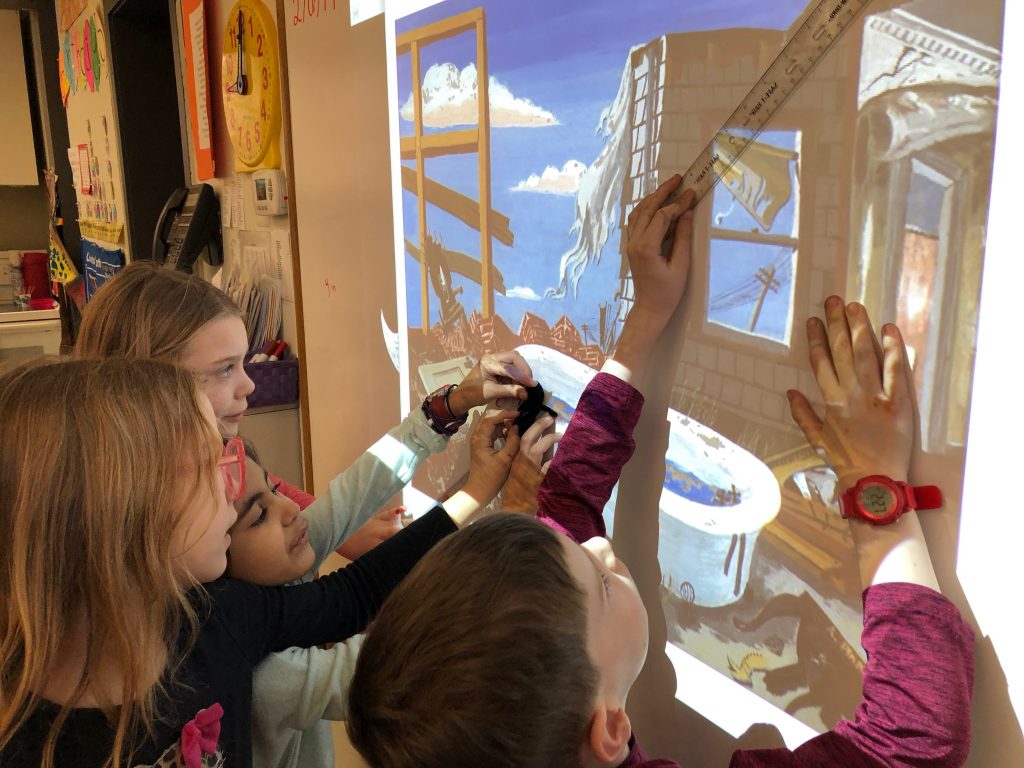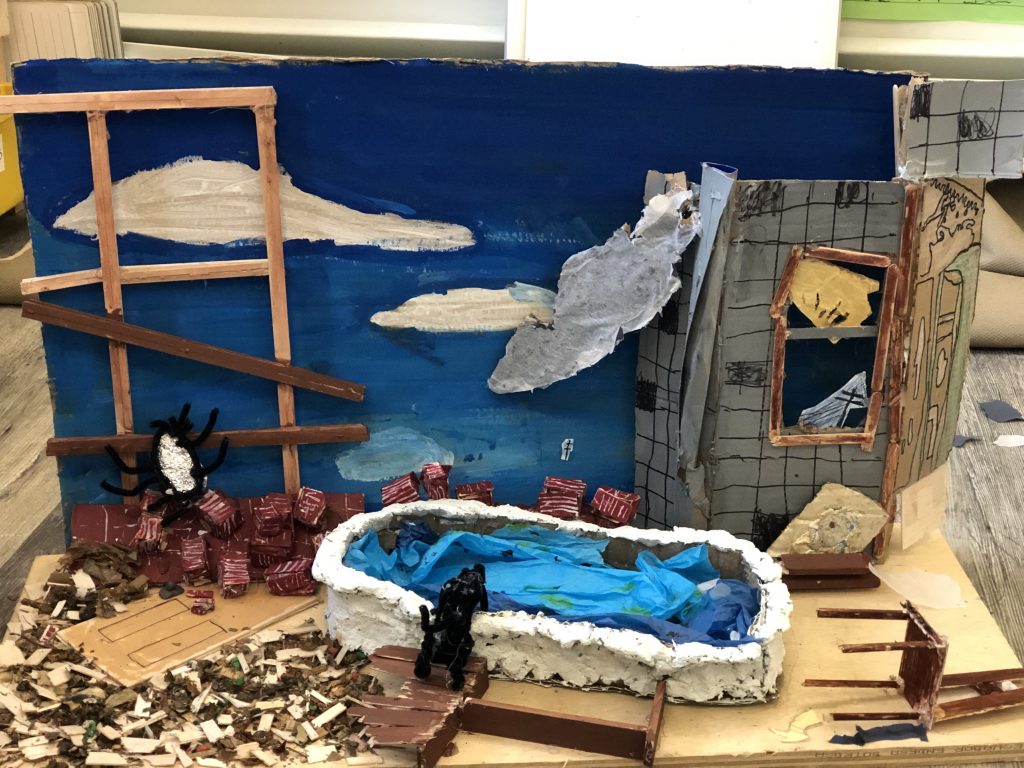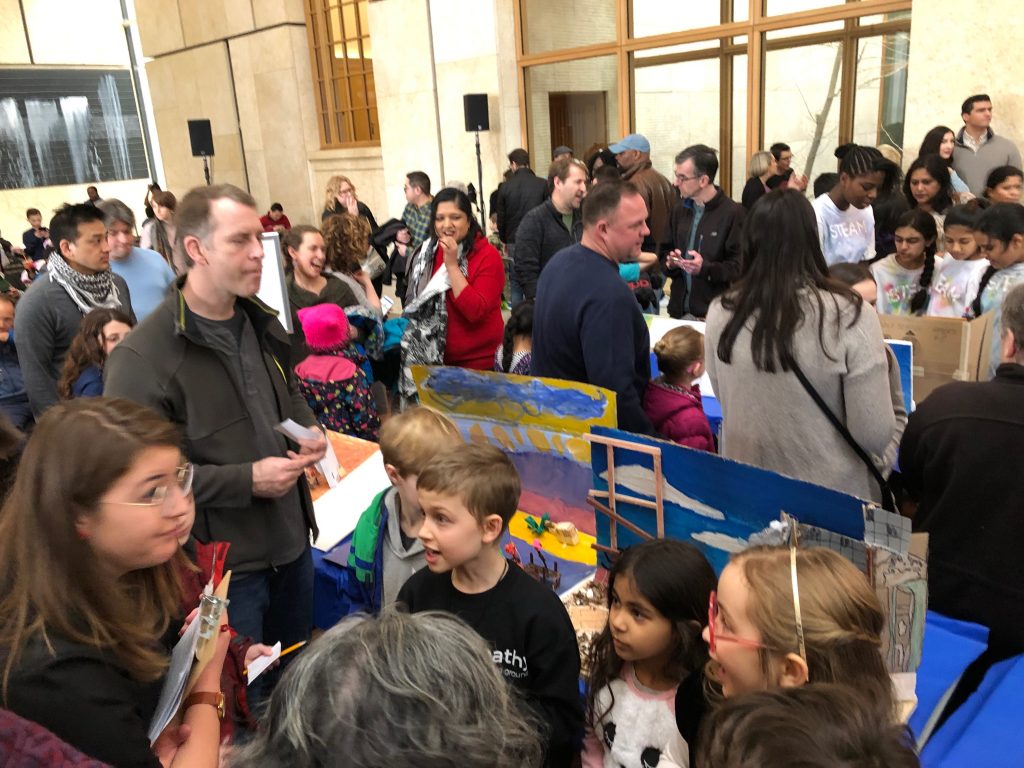The Art of Math
Students Learn about Scale Models, Measurement, and Win Honors from The Barnes Foundation
A lot of families come to Miquon for our beautiful, wooded campus. Others seek out the way in which we support the growth of the whole child as they develop their intellects, their physical bodies, and their social-emotional skills. Many more join our community for our commitment to the preservation of childhood, coupled with the trust and independence we give children. Without question, families find evidence of all of these programmatic characteristics for which Miquon is known when they visit in person.
They also find something else–something that they don’t always anticipate.
By touring our classrooms and talking with teachers and with children, families see that Miquon students have a rigorous academic experience through the authentic, deep exploration of topics–work that is considered to be a foundational element of the school’s academic curriculum.
Experiential Learning
A deep exploration of measurement and art with hands-on projects
One such exploration presented itself this spring, and our students won awards for their work.
Specifically, first, second, fifth, and sixth graders were tasked with designing and building a three-dimensional scale model — using Sculpey polymer clay, paper, paint, cardboard, wood, pipe cleaners, popsicle sticks, glue, and more — based on one of three well-known paintings as a part of their entry into The Barnes Foundation Art of Math Challenge in March:
- The Raft, by William James Glackens (1915, Oil on canvas),
- Bathtub and Cat by Angelo Pinto (c. 1944, Reverse painting on glass), and
- Interior Scene by an unidentified artist (Late 18th or 19th century, Chinese black ink and heavily applied pigments on silk).
The Art of Math was a weeks-long project comprising the union of fine art and mathematics, as well as an extensive study involving literature, art history, planning and strategic thinking, and working collaboratively in groups.
Mathematical Thinking at Work
As a result, students in first and second grade developed a deep understanding of two-dimensional (rhombus, square, triangle, circle, parallelogram, trapezoid, etc.) and three-dimensional (cube, cuboid, pyramid, cone, sphere, cylinder, etc.) shapes. They studied works of fine art and their history. They honed their skills making observations, learning about perspective, and grappling with concepts like number, vertical/horizontal positioning, negative space, and size. They learned how to measure and produce accurate three-dimensional scale models based on a 1:1 ratio of two dimensional work–specifically, measuring a projection of the painting that was the same size and dimensions of the physical base of the model.
 Measuring the projection of Bathtub and Cat by Angelo Pinto before creating the scale model.
Measuring the projection of Bathtub and Cat by Angelo Pinto before creating the scale model.A constructivist approach
Much of this work entailed the constructivist approach that Miquon does best: It’s the idea that children are encouraged to formulate their own understanding as much as possible. Often this means giving students the time and the space to explore their passions while meeting curricular goals. In other instances, this means allowing children to share what they observe, notice, and wonder as a guide to the classroom work–even as much as that which is provided by the teachers.
The Art of Math project was the perfect occasion for this. Children were not told how to make their scale models in a step-by-step guide provided by the teachers. Instead, the students were given just enough information to think through the measurement and building process, and arrive at their own conclusions.
For example, Evan Mohr, a first grader, shared what he knew with the class. “The painting is 32 inches,” he said.
Next he explained how he used that information to make a hypothesis about how large to build the painting’s bathtub in their scale model of Bathtub and Cat. “I measured with my eyes and the bathtub is half as wide as the painting.”
From there, other students had the opportunity to build on Evan’s suggestion and move the project forward.
Second grade student, Declan Aptowicz, measured to check Evan’s thinking. She found that in the painting, the bathtub was 16 inches.
“That’s half of 32,” said Evan, and the class worked to mold the Sculpey bathtub to the correct dimensions.
 Miquon students’ scale model of Bathtub and Cat by Angelo Pinto.
Miquon students’ scale model of Bathtub and Cat by Angelo Pinto.In another group, the students observed that the color copy of the painting, Interior Room, was a perfect square. Following this, they were able to articulate a specific plan to create an accurate scale model using their math skills. Discovering that their model base measured 20” x 30”, and knowing that 30-10=20 inches, they trimmed the base to make it into a square like the original, measuring 20” x 20”.
To take their measurements, the students used rulers as well as other units of measure, such as Unifix cubes.
“We measured a lot, because we didn’t want stuff to be the wrong size,” agreed Miles Kane, a first grader.
Building Models and 21st Century Skills
In addition to acquiring extensive experiential knowledge in measurement, shape, and scale, the students were able to work together on a project that required them to collaborate, chart out plans, practice decision making, listen to partners, and speak up with their own ideas–all 21st century skills that will be so critical for the jobs these children will take on when they enter the workforce.
“[We had to] write all of our materials and write our next steps. We talked about what we wanted to do in pairs. We talked about size and materials and background. We counted and measured and then we started building,” explained second grader Maxine Dezort Reynolds.
All seven of Miquon’s entries were presented along with submissions from other area schools at The Barnes Foundation on March 3. One first and second grade Miquon group, which created a model of The Raft, was selected as the winner for Mathematical Reasoning out of the first through fourth grade entrants. The model of Bathtub and Cat, also created by first and second graders, won the popular award for first through fourth grade models.
 Miquon students explaining their work at The Art of Math Challenge, presented by The Barnes Foundation, on March 3.
Miquon students explaining their work at The Art of Math Challenge, presented by The Barnes Foundation, on March 3.One of the judges, Annie Fetter, founding staff member of the Math Forum and Math Education Specialist at the 21st Century Partnership for STEM Education remarked, “[It was] the perfect sort of project for Miquon. Not only do you already approach learning as a community activity and try to integrate subjects whenever possible, but you also have the flexibility to allow students to really dig into something . . . which they might not have thought about so explicitly before.
“It [was] so fun to meet so many of the students and hear more about their thinking, both mathematical and artistic, as well as their experiences working in a group.”
Miquon supporters can enter to win one of two actual scale models as a part of our Spring Fair raffle, to be held on May 18. Raffle entries can be purchased online through May 17 at noon by visiting www.miquonstore.org.